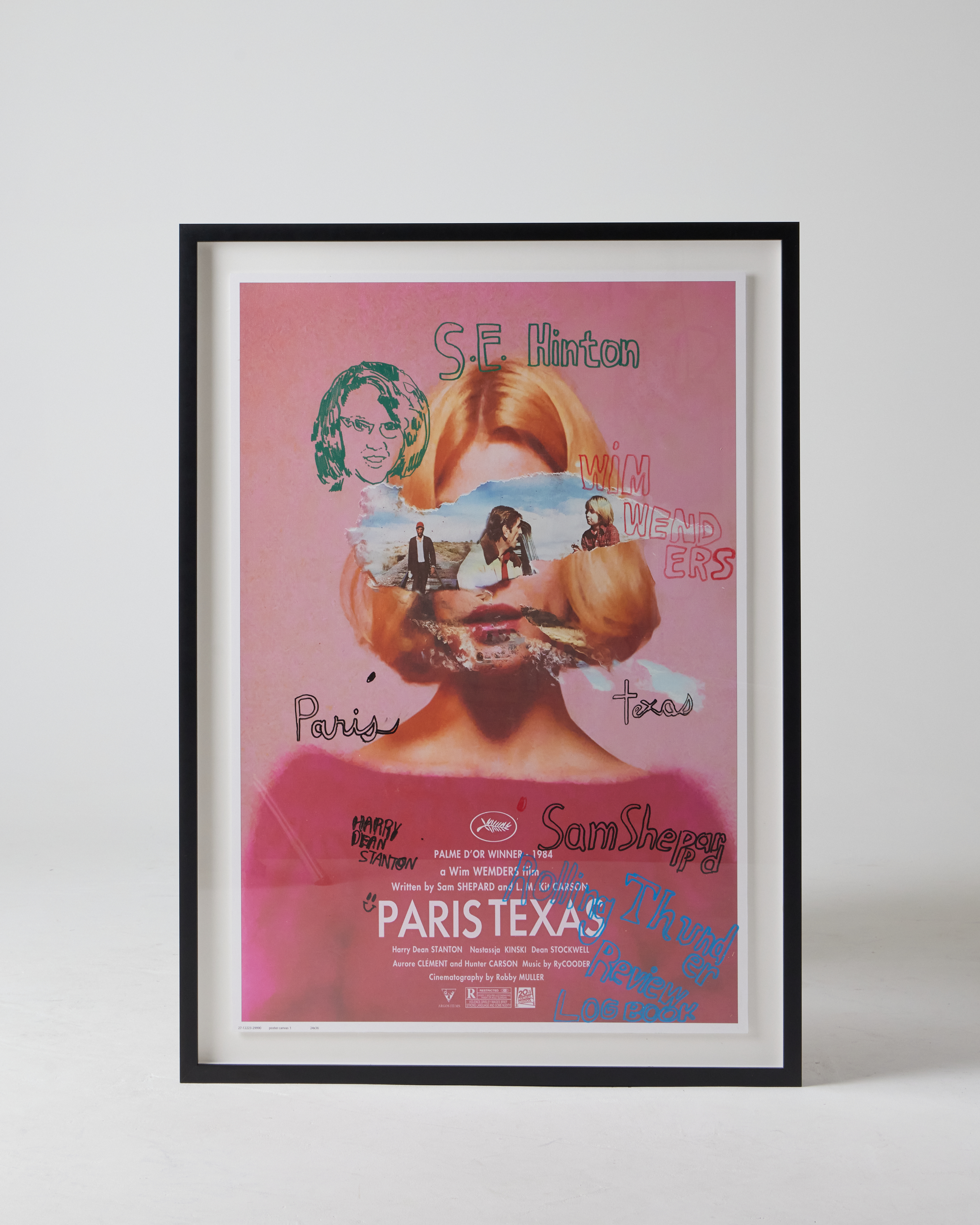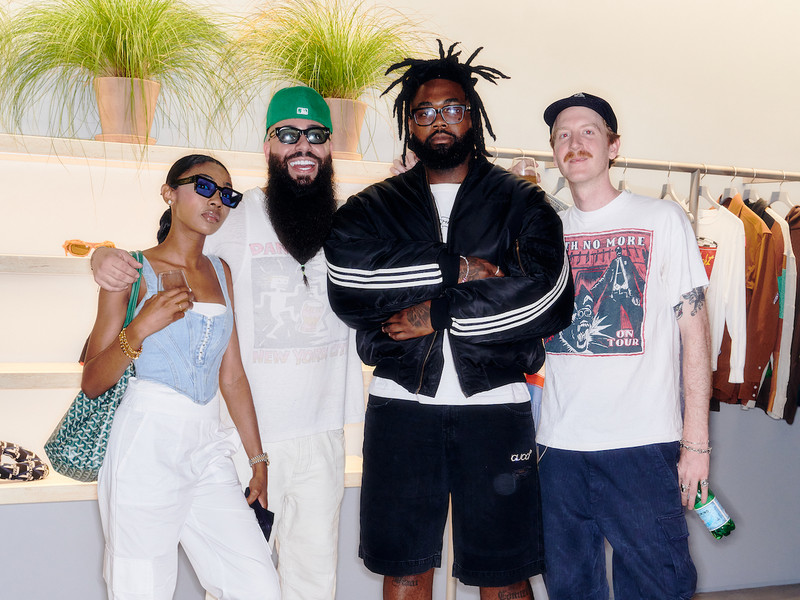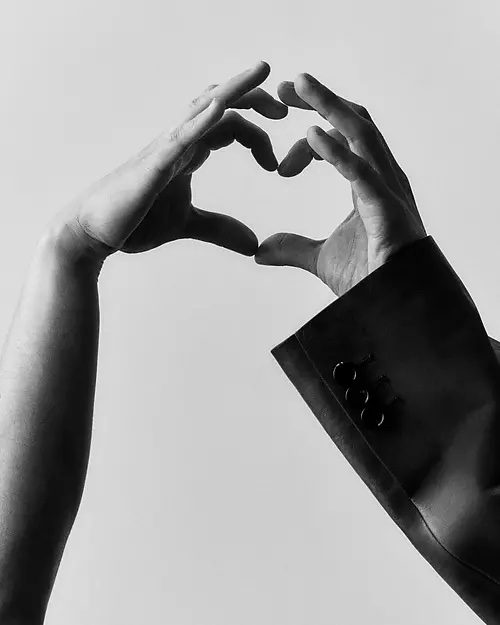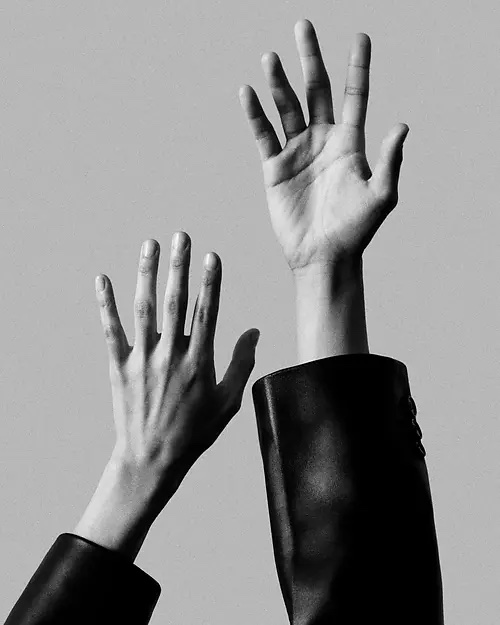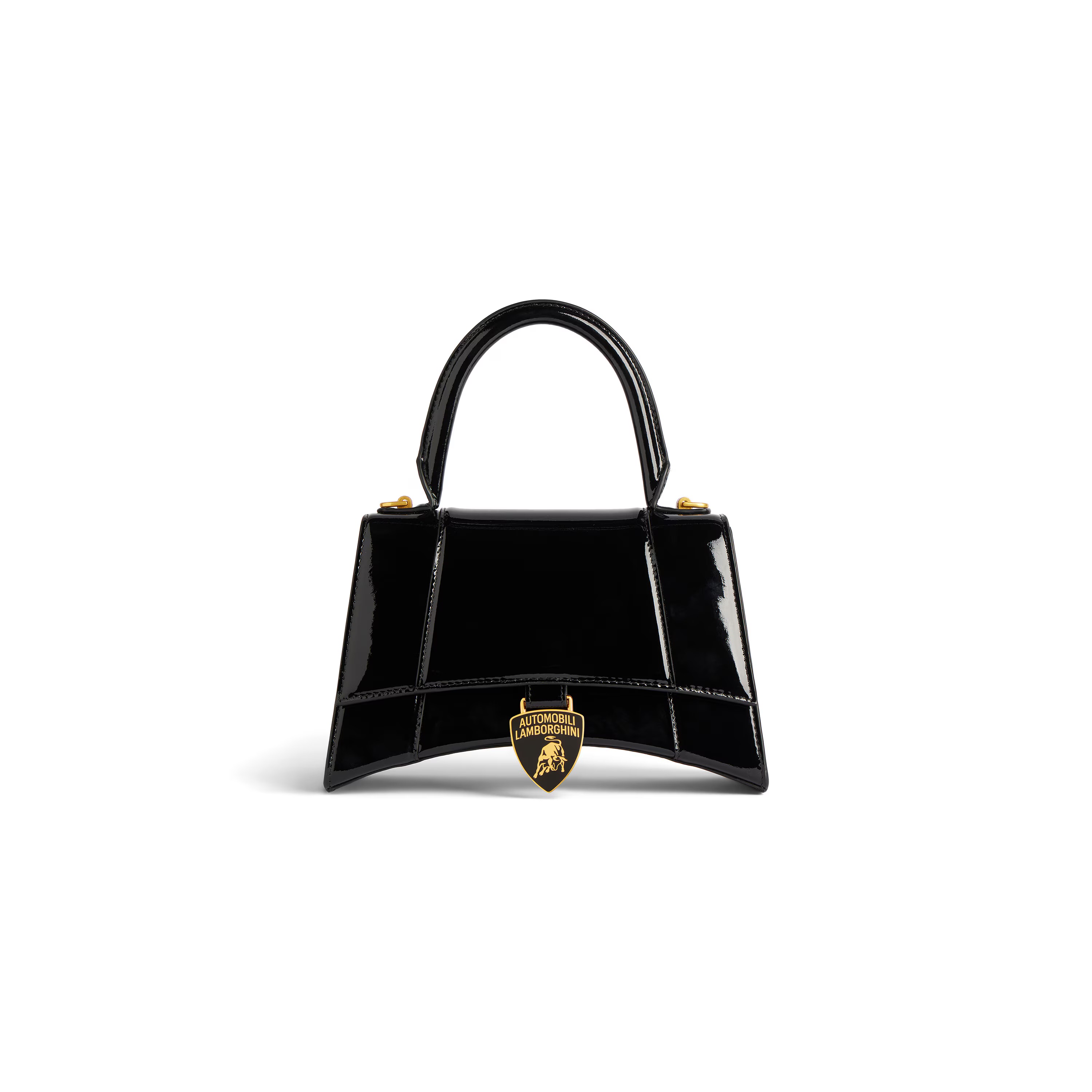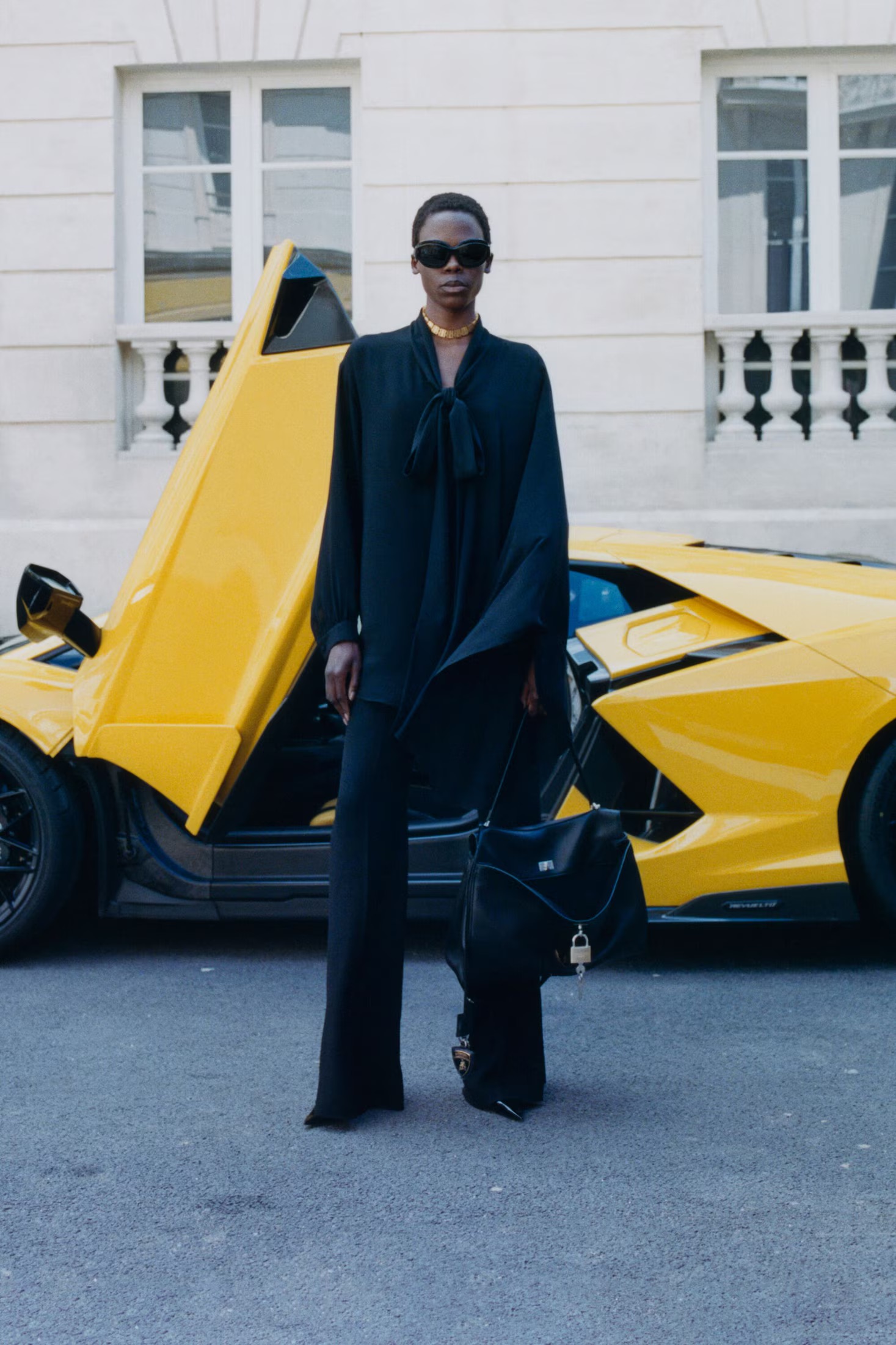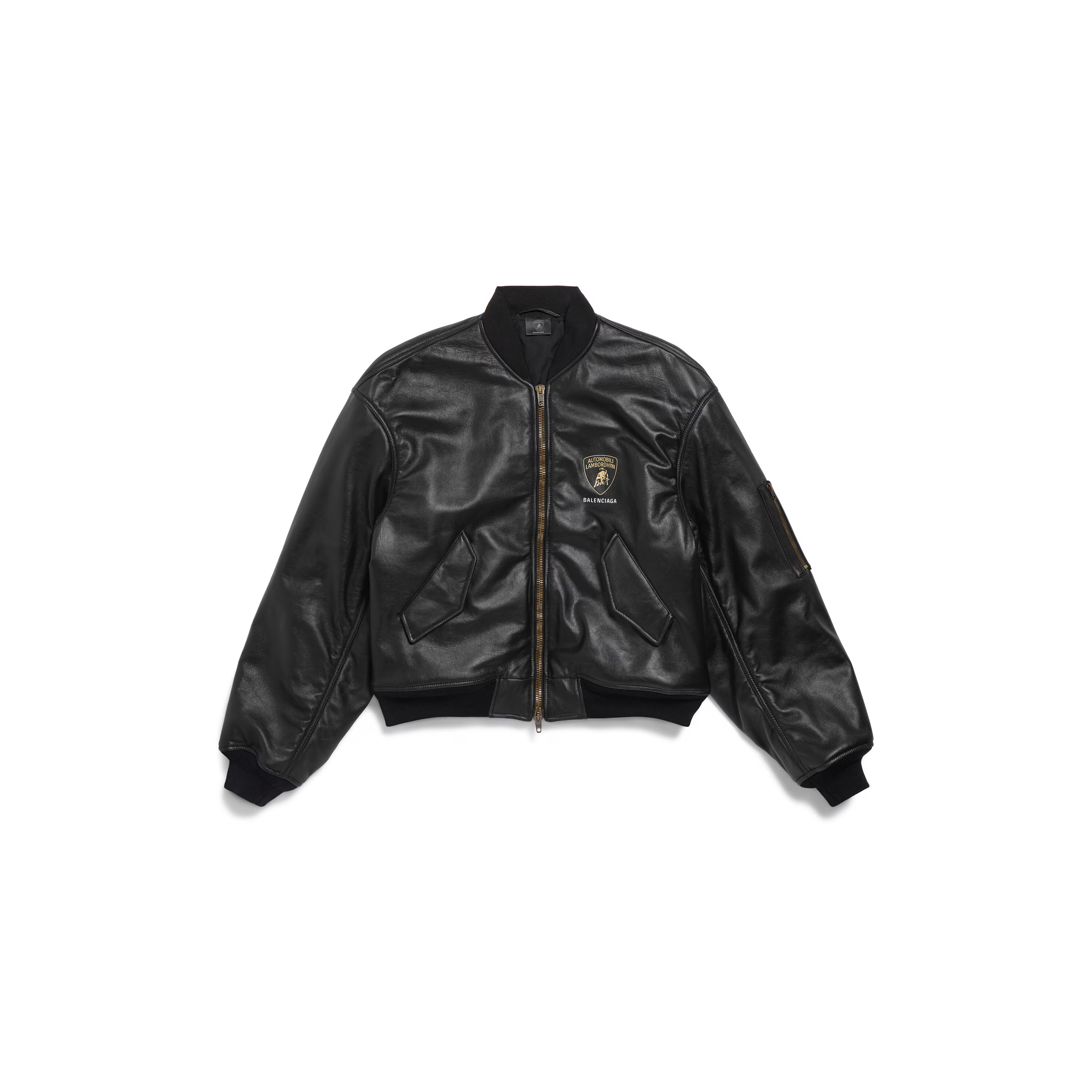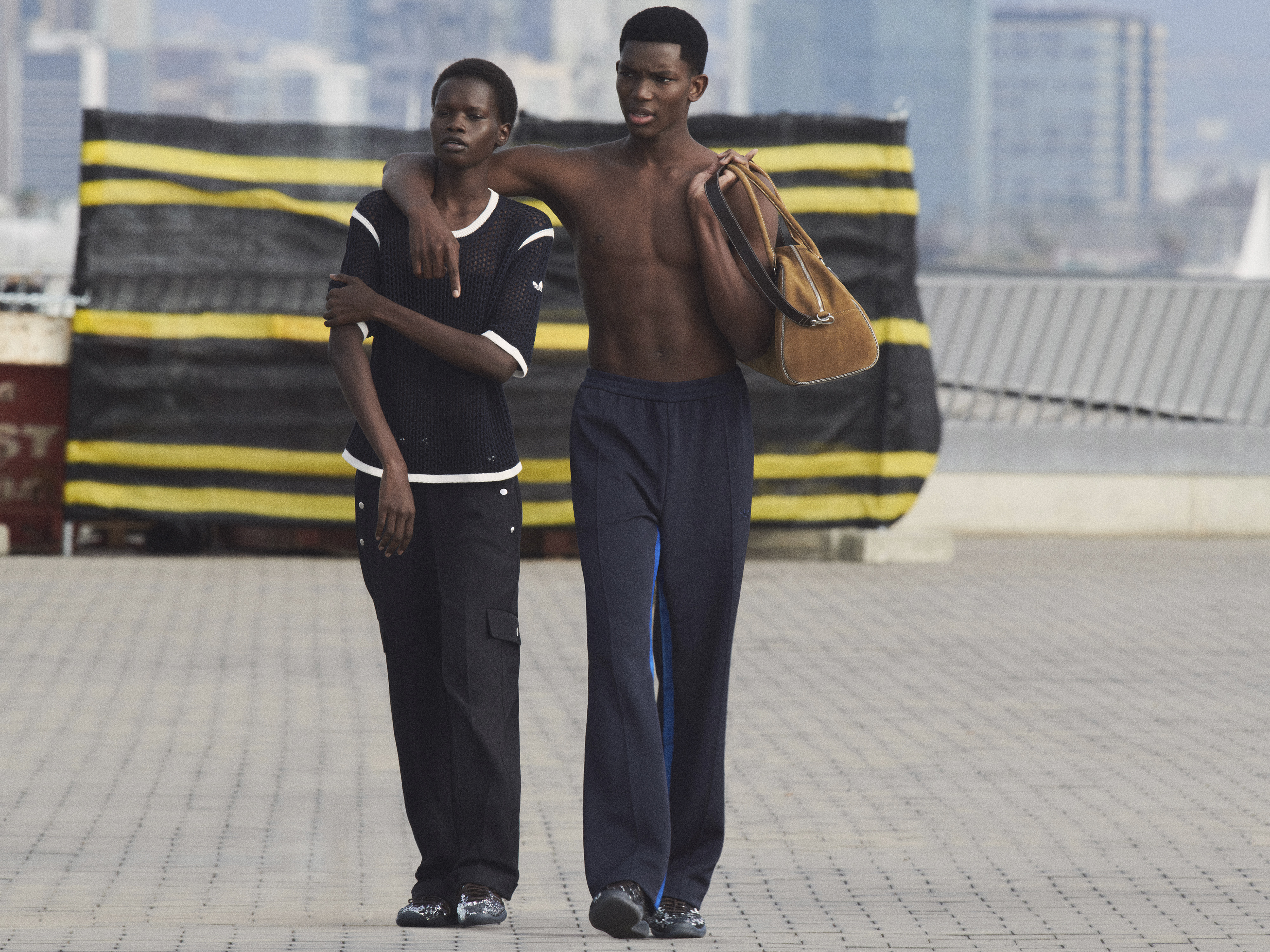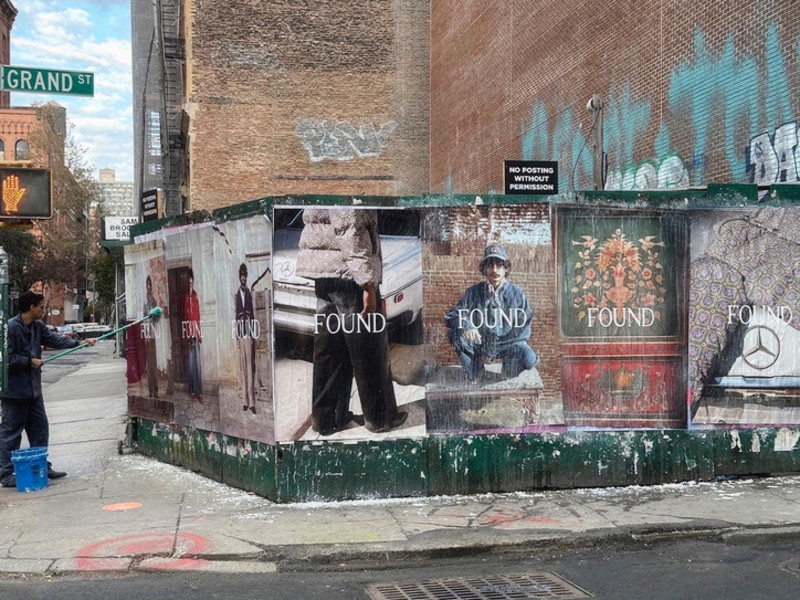Inside PALY: A Conversation with James Franco and Kyle Lindgren

Simon Rasmussen: Kyle, nice to meet you. How’s it going?
Kyle Lindgren: Hey, man. Good, good.
James always got Google Meet issues. But I’ll text him—he’s usually a couple minutes late.
Simon Rasmussen: How did you and James first meet?
Kyle Lindgren: Through mutual friends—classic L.A. story. My friend was close with his girlfriend, and we just kept crossing paths at art galleries and film events. During COVID, we ended up connecting more. I think he was writing a script loosely inspired by The Bachelor.
Simon Rasmussen: That’s a solid show.
Kyle Lindgren: Right? I mean, it started as research, but we all got hooked. Every week, friends would come over to watch The Bachelor at James' place. Actually, now that I think about it, this is kind of the origin story of PALY. I’d just come back from my day job at the Fucking Awesome, and James would be sitting there doodling in his notebook while we watched.
One night, I asked to see some of his sketches, and from there, I started experimenting. I’d wake up at 5 a.m. every day before work, watch YouTube tutorials on Photoshop, and just crank out designs. I wasn’t good at graphic design then—most of the stuff I made was terrible, looking back. But a couple of those pieces actually saw the light of day. I’d mock up t-shirts using James’s sketches and try different techniques I learned online. Eventually, we made about 30 designs, printed them all, and brought them to our Bachelor group. Everyone voted on which ones we should produce, and that became our first unofficial collection.
Simon Rasmussen: So this all started in 2020?
Kyle Lindgren: More like 2021. By that time, James had built up a pretty solid archive of sketches. During the pandemic, he started this ritual of sketching in a notebook every day. His assistant would scan everything, so when we began seriously creating designs—initially just for our friends—there were already 1,000 or 2,000 drawings to work with.
Now we’ve got over 8,000. He goes through a notebook every couple of weeks. It’s crazy.
(At this point, James Franco joins the conversation...)
James Franco: Hey, sorry I’m late. What’s up? I’m out of it. I’m only in LA for five days, so I just… yeah, I just got back. Sorry about that.
What were you guys talking about?
Kyle Lindgren: We were just talking about how you’d sketch during Bachelor nights and how that turned into our first designs.
James Franco: Oh, yeah. That’s funny to think about. It really started so casually during COVID. Well keep going.
Simon Rasmussen: So it really began during those watch parties?
Kyle Lindgren: Yeah, in the most random way. It wasn’t some planned thing; it just came together naturally.



Kyle Lindgren: I had forgotten that it all circled back to The Bachelor—when we used to sit and watch it every week. I think I was talking about how when we started mocking things up, we had maybe a couple thousand drawings. The last time I counted we had about 7,000. That was a year ago, and now we’re probably at 14,000. It’s been super helpful for designs.
James Franco: Yeah, I don’t know what Kyle’s told you, but we’ve known each other for years now. I’d gone to art school a long time ago, but I hadn’t been drawing or painting for years. During the pandemic, I read How to Be an Artist by Jerry Saltz. It’s a simple book, but really smart, with practical ideas about creativity. One suggestion was to draw every day. With acting on hold, I thought, Okay, I’ll create a schedule for myself, even if there are no art shows or concrete goals in sight.
I started sketching while we’d watch The Bachelor—initially as research for a script I was writing about LA TV.
Simon Rasmussen: So it started as research?
James Franco: Yeah, and then it became an addiction. My girlfriend’s the real reality TV addict now—she’s deep into The Real Housewives. I couldn’t hang with that; it’s like Dostoevsky-length reality TV. But The Bachelor didn’t require much focus, so I’d sketch while we all watched. Then Kyle asked me to draw on some denim. I did a couple of jackets, and our friends thought they were cool and started bringing their own jackets for me to customize.
Kyle saw potential in the drawings and started mocking up t-shirts. He scanned the sketches and printed them onto shirts. We ended up with a bunch of samples, laid them out in the kitchen, and had our friends vote on which ones were best. That became our first collection: eight t-shirts and a few hoodies and crewnecks.
Simon Rasmussen: When did this happen?
Kyle Lindgren: We showed the collection for Spring/Summer ’24, so by June 2023, we were in Paris.
James Franco: Before that, we didn’t have any store connections. Kyle lived near H. Lorenzo in LA, so we walked in with our stuff. It was like a scene from a movie. Lorenzo and his son, Mack, were there. Lorenzo was like, Okay, show me what you’ve got. Put it on the racks. They went through every piece, deciding which ones to take. It was all consignment, but they sold everything.
After that, we went to Paris for Men’s Week. We rented a hotel room and emailed stores, introducing ourselves as Kyle and James Franco. Honestly, I think some people thought it was a scam.
Kyle Lindgren: We didn’t want to market it as a “celebrity brand,” but that was probably the one time we used James’ name—just to get people to come look.
James Franco: Hey, Kyle, go back to the origin spot. What was in your brain when we started, I can't even remember?
Kyle Lindgren: Honestly, I think I just had this tunnel vision about apparel. Back then, everything I saw—sketches, objects, even random stuff like a leaf on the street—felt like it could be applied to fashion. It’s a bit corny, but I was constantly thinking, How can this become a shirt, or inspire a collection? Like so dumb.
It was really just like a daily practice. James was doing his daily drawings. I was doing my little daily mockups every morning before work. We never really forced anything. It also didn't come easy, like having a celebrity attached. Because that wasn’t the front-facing thing, we didn’t really take many shortcuts. It almost made it harder because we had this thing we were trying to conceal. We didn’t want it to damage the brand and wanted the design to stand on its own.
James Franco: At MRKT during Basel, people came in loving PALY without knowing I was involved. I was even drawing on denim at the party, and some kids didn’t realize it was me until later. It’s kind of fun being in the background like that.
Simon Rasmussen: So, why do you choose to tell the story now?
James Franco: There’s part of me that really liked the idea of it being kind of a hidden thing. Because, as opposed to acting, where I can’t escape it—it’s just like, boom, there I am; it’s my face that’s in the work—this was different. There was something appealing about a kind of Elena Ferrante or Banksy thing.
But I think we just figured: a) it wasn’t going to remain hidden forever. I was already meeting with all the stores, doing events. I wasn’t going to keep showing up to things in secret. And b) we realized the selling point wasn’t me. People liked the product. So, it wasn’t about leveraging celebrity; the design stood on its own.


Simon Rasmussen: Was Hollywood always part of the vision?
Kyle Lindgren: Yeah, it’s central to James’s art. His work reflects Hollywood history and its darker underbelly, so it became the natural throughline for the brand. When I placed his drawings into the context of the designs, Hollywood’s mystique tied everything together.
Simon Rasmussen: Is there a message to Hollywood in the brand?
James Franco: I wouldn’t call it a direct message or critique. It’s not like one of those tourist t-shirts that says, “This place sucks.” It’s more about transformation. There’s an underground filmmaker, Kenneth Anger, who really influenced me. He wrote Hollywood Babylon, a book full of overblown gossip and tragedy that turned Hollywood’s mystique into something almost mythical, like a quasi-religion. He collaborated with people like Mick Jagger but also explored Hollywood’s darker, mystical side.
Anger’s work was about taking the glamour and icons of Hollywood and making them reference something bigger—both its light and dark sides. That’s what I see PALY doing, too: not critiquing Hollywood but diving into it and amplifying its mystery and power. It’s about letting Hollywood represent something universal, something that fascinates us about humanity.
A lot of artists I admire, like Paul McCarthy, Harmony Korine, and Douglas Gordon, used Hollywood as material to create something new. For me, it’s similar—I grew up in Hollywood, but through art and now fashion, I can step outside of it. I’m in a unique position where I can use Hollywood as a lens, not just to critique it but to reimagine it and turn it into something fresh.
Simon Rasmussen: It's a very interesting place, you guys position yourselves. Luxury brands are increasingly positioning themselves as entertainment channels, aiming to compete with top Hollywood productions. Brands like Louis Vuitton and Saint Laurent are focused on creating films, taking on the role of filmmakers to rival major directors.
James Franco: Yeah, I noticed that trend at Cannes this year. Saint Laurent Productions had like four films there.
Simon Rasmussen: It’s fascinating how brands are trying to imitate Hollywood. It's very interesting. You're onto something.
James Franco: Exactly. I was just watching Queer by Luca Guadagnino last night, and Loewe's designer did all the costume design.
Enzo Holdt: The collection you just launched at Art Basel features reimagined posters of films like Paris, Texas, Blue Velvet, and Drugstore Cowboy. These movies explore themes of alienation, so I wanted to ask, James, why did you choose these specific films/posters to work on?
James Franco: There are a few reasons. On a practical level, Kyle sources these vintage posters, so part of it depends on what he finds. But when I saw these oversized, beautiful pieces, I initially hesitated—like, should I even draw on them? Then I thought, well, that's kind of what I do. When I was in Italy recently promoting a film, I spent a lot of time signing posters, so in a way, this felt like an extension of that—adding to the poster, not destroying it.
As for the films themselves, Kyle and I often develop themes for each collection, whether it's an old legend, a tragedy, or a myth. For example, in Miami, there’s a nod to Dorothy Stratton’s tragic story, which inspired Star 80. With Paris, Texas and Drugstore Cowboy, I have a personal connection, having worked with Wim Wenders and Gus Van Sant. And Blue Velvet, for me, is iconic—David Lynch at his best. It’s the movie where he fully became Lynch, balancing a polished surface and then underneath is the subconscious and the darkness. And in a way, I think that's our company, those multiple levels. So that movie, just like Kenneth Anger, is super special to me and Kyle.
And beyond that, these films share a certain kind of Americana, capturing a raw, rugged underbelly of America that resonates deeply with what we’re building.
Enzo Holdt: Kyle, when I look at PALY’s designs, I see a strong punk influence, which might come from your time at Fucking Awesome. But the combination of that with Hollywood—something far more glamorous and alluring—feels contrasting yet creates something really beautiful. Could you talk about that?
Kyle Lindgren: Definitely. My time at Fucking Awesome taught me a lot, particularly about working with an artist’s vision and translating it into three-dimensional forms.
Enzo Holdt: You’re referring to Jason Dill?
Kyle Lindgren: Yes, Jason. We’d dig through his archive of artwork and find creative ways to bring it to life. That experience taught me how to add depth to a collection, not just through storytelling—like what James brings—but also through the techniques we use.
With PALY, there’s a real emphasis on storytelling. James drives that narrative side, but we also make sure the garments physically tell a story. Techniques like crystals, embroidery, washes, and distressing aren’t just decorative—they give each piece a sense of history, as if the wear and details reflect where the garment has been.
Ultimately, we merge these elements into a cohesive whole, where the designs carry both visual and emotional depth.
Enzo Holdt: It sounds like PALY’s storytelling and approach are very tactile. Would you describe it as an analog brand in a digital world?
Kyle Lindgren: That’s a deep question. For me, I’m so involved in the day-to-day that it’s hard to step back and see the brand from a broader perspective. James is much better at looking at the whole picture, whereas I’m more focused on the physical product—the fabrication, techniques, washes, all of that.
In that sense, the brand feels analog to me. Maybe it’s because I’m getting older, but I naturally think product-first, rather than prioritizing social media or digital campaigns. That’s what creates a nice balance between James and me. His background is rooted in media and storytelling, whereas I’m more hands-on and product-oriented. Together, it creates a dynamic mix.
James Franco: I love that, and I’ll just add something quickly. About ten years ago, I did a project with MOCA in L.A. based on Rebel Without a Cause. The project, Rebel, involved different artists reinterpreting parts of the film or its behind-the-scenes stories to create new work.
That’s what I appreciate about PALY. It’s not about critiquing Hollywood; it’s about re-engaging with it and giving it new life. I love how old movies still resonate—fan clubs, special screenings, places like the New Beverly—and how they continue to bring people together.
Through PALY, we’re doing something similar. We’re not remaking Drugstore Cowboy, but we’re reanimating its essence. These stories and legends get a new form through the clothes—new iconography, new imagery. It’s like the narrative is reborn, letting people connect with those stories in a fresh way. You’re not just watching the movie; you’re experiencing it again, but differently, through what you wear.
Enzo Holdt: You have mentioned Kenneth Anger a few times, what is your favorite project of his? I just watched Lucifer Rising for the first time, and it felt a bit occult, but I thought it was pretty good.
James Franco: Lucifer Rising definitely has a dark backstory.
Enzo Holdt: Yeah, I read about the music and the composer was connected to the Manson family, right?
James Franco: Exactly. Beausoleil was the first member of the Manson family to be arrested. He wasn’t involved in the Sharon Tate murders but was tied to an earlier one. There’s a whole history there—he and Kenneth Anger had a falling out, and supposedly, Beausoleil stole some of the film reels for Lucifer Rising and buried them in the desert.
Enzo Holdt: That’s wild.
James Franco: For me, Scorpio Rising is still my favorite Kenneth Anger project. I first saw it in film school, and it completely blew me away. What stood out was the way he used pop hits of the time as a soundtrack, set against contrasting and provocative visuals.
What really struck me, though, was how Anger, as a queer artist, captured a real biker gang and transformed their image. Instead of coming across as purely tough and hyper-masculine, they take on this sensual, almost queer quality through his lens. That idea of transforming your subject through how you shoot it really resonated with me. It influenced my early short films at NYU and is still something I think about in my work today.
Enzo Holdt: What has been the most rewarding part of building PALY together?
James Franco: For me, the most rewarding part has been the collaboration. I’ve always loved working with others—it’s something I learned from being an actor and making films, where every project involves so many people coming together. Working with Kyle has felt really natural, and it’s been this beautiful, symbiotic process.
I tend to want to do too much—I overload scripts, shoot too many scenes, and put in more than necessary. When I direct movies, editors and producers help me refine things, and Kyle plays a similar role for PALY. He’s like an editor, filtering my tendency to go overboard and helping shape all these ideas into something cohesive and better.
As an artist, having a collaborator or editor you trust is invaluable. It’s what I’ve always envied about teams like the Coen Brothers—someone to bounce ideas off of and build something together. That’s what we’ve created here, and it’s incredibly rewarding.
Kyle Lindgren: I’d have to echo that—it’s the collaboration. Being able to bounce ideas back and forth until they evolve into something unexpected is such a special process. Often, it’s a struggle to get there, but when you trust your partner, even if it’s just starting on a two-dimensional screen, you create something far better than you could have on your own. For me, that’s the most rewarding part of this whole journey.

